All Operas
1884
Le Villi (The Willis)
Open
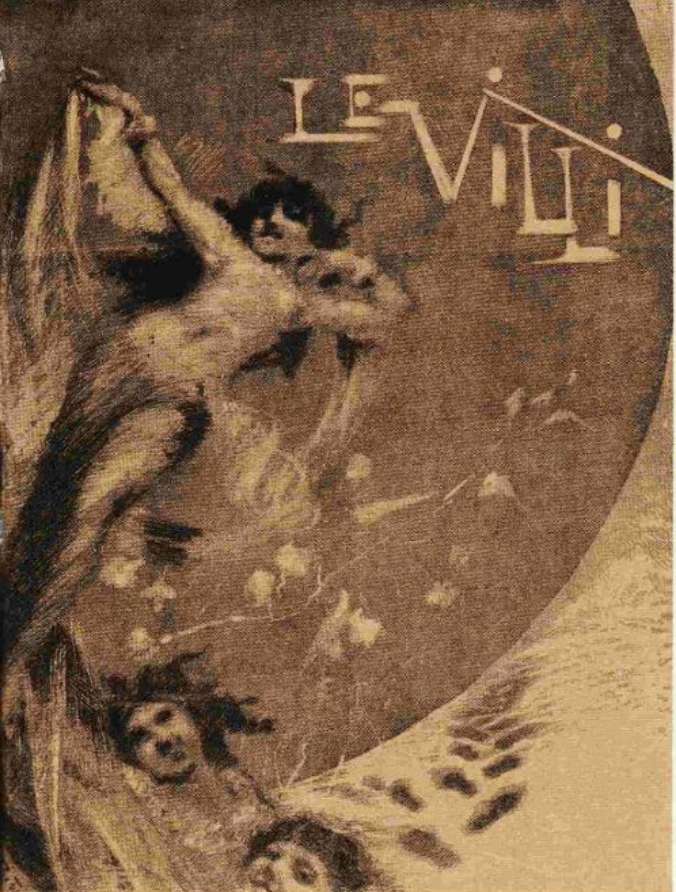
Performed for the first time on 31 May 1884 at Milan’s Teatro dal Verme
Opera-ballet in two acts
Libretto by Ferdinando Fontana
The story opens in a village in the Black Forest, where the engagement of Roberto and Guglielmo Wulf’s daughter, Anna, is being celebrated.
On a visit to Mainz, Roberto is seduced by another woman and forgets Anna, who dies of a broken heart.
Roberto returns to the village to ask Anna’s forgiveness, but instead he is punished by the Willis – magical fairies who force heart breakers to dance to death.
During their macabre dance, Anna’s ghost appears before Roberto, begging him to remember the promises he made and his betrayal
In the end, the Villi vanish together with the poor woman’s ghost, leaving remorse and sadness in Roberto’s heart.
Close
1889
Edgar
Open
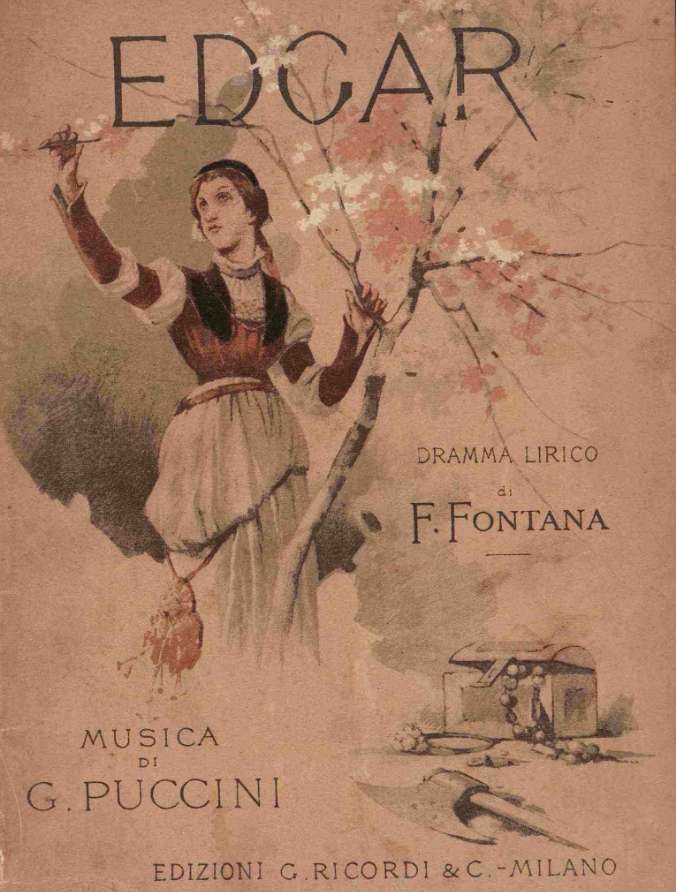
Performed for the first time on 21 April 1889 at Milan’s Teatro alla Scala
Opera in four acts, later reduced to three acts
Libretto by Ferdinando Fontana
Flanders, 1302. Edgar, a young man from the village, falls madly in love with Tigrana, a mysterious gypsy, abandoning his fiancée Fidelia To protect the gypsy from the villagers’ criticisms, Edgar sets fire to his own house and runs away with her to live in a lavish castle.
Nonetheless, the young man begins to miss his old life and Fidelia.
When he hears the beating of drums and military fanfares announcing the arrival of a platoon of soldiers, he decides to join them and goes off to war.
After the battle, the Flemish soldiers are victorious, but Edgar is among the fallen and is carried home with full military honours. During his funeral, a mysterious monk tells everyone about the man’s sins, but Fidelia, still in love with Edgar, defends him.
Tigrana, arriving too late for the funeral, joins forces with the monk to take revenge on Edgar, declaring that he betrayed his country. When the soldiers attempt to desecrate the body, the monk removes his habit, revealing that he is Edgar.
Fidelia, overcome with joy, tries to embrace her beloved, but is stopped by Tigrana who stabs and kills Fidelia in front of a devastated Edgar.
Close
1893
Manon Lescaut
Open
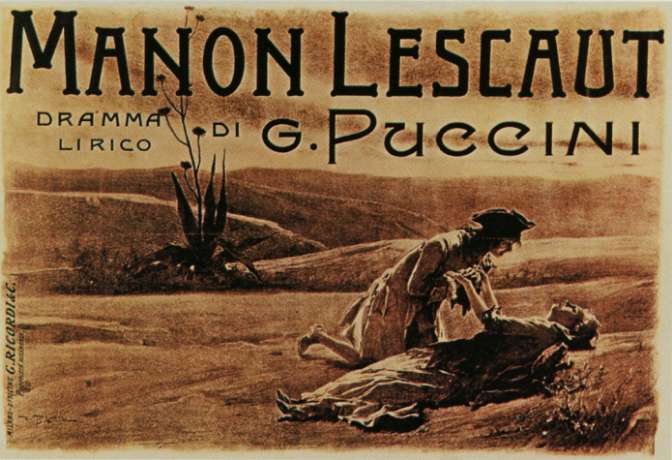
Performed for the first time on 1 February 1893 at Turin’s Teatro Regio
Opera in four acts
Libretto by Luigi Illica, Marco Praga and Domenico Oliva
This opera tells the story of Manon Lescaut, a young girl destined to live in a convent, who meets the young student Des Grieux and falls in love. They decide to run away together but are followed by Geronte, a wealthy elderly banker, who, with help from Manon’s brother, tries to abduct the girl and make her his own.
The two lovers manage to escape, but their happiness is short-lived as young Manon immediately tires of the student’s humble lifestyle.
Manon retraces her steps and becomes Geronte’s lover, even though she increasingly feels nostalgia for Des Grieux, who secretly joins her in the banker’s mansion.
When they are discovered together, Manon is arrested and deported to America. Des Grieux follows her and boards the same ship, but their final journey together will be fatal for Manon.
Exhausted from fleeing through the American landscape, Manon falls to the ground and dies in her lover’s arms.
Close
1896
La Bohème
Open
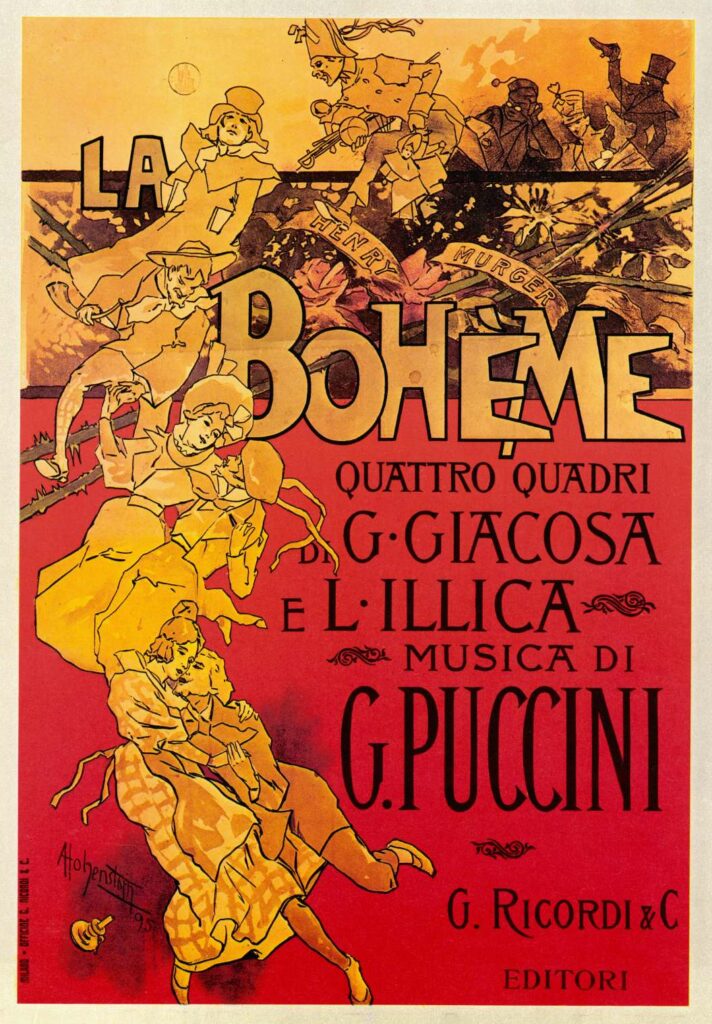
Performed for the first time on 1 February 1896 at Turin’s Teatro Regio
Opera in four acts
Libretto by Luigi Illica and Giuseppe Giacosa
A group of artists explore life in 1830s Paris, coming to terms with the subjects of frivolous love and death.
Act I:
Paris, 1830. A group of young bohemians live a happy, carefree life.
The story begins under the snowy rooftops of the city, in the garret shared by Marcello and Rodolfo. Here, they meet Mimì, their young neighbour who knocks on the door to ask for a candle. This meeting between the young seamstress and Rodolfo marks the beginning of a new emotion which intensifies over the course of the opera.
Act II:
Rodolfo and Mimì are with the group of bohemians at Cafe Momus where they meet Musetta, a former sweetheart of Marcello’s, who is with the wealthy Alcindoro. Musetta does everything she can to get Marcello’s attention, pretending to have a sore foot caused by her shoes. Marcello gives in to her advances and reconciles with Musetta. The group are unable to pay their bill, so they run off, leaving the entire bill for Alcindoro, who has gone out to buy a new pair of shoes for Musetta.
Act III:
Paris is entirely covered in snow. Mimì, upset about her relationship with Rodolfo, confides in Marcello, who is also having romantic difficulties with Musetta.
At this time, Mimì is seriously ill, and Rodolfo is afraid that living in the garret could be harming his beloved’s health. They decide to stay together until the spring, unlike Marcello and Musetta who separate after a fierce quarrel.
Act IV:
Mimì’s condition worsens, and her friends start selling their possessions to get the medicine she needs. Despite their efforts, Mimì dies peacefully in Rodolfo’s arms in the garret where they first met.
Close
1900
Tosca
Open
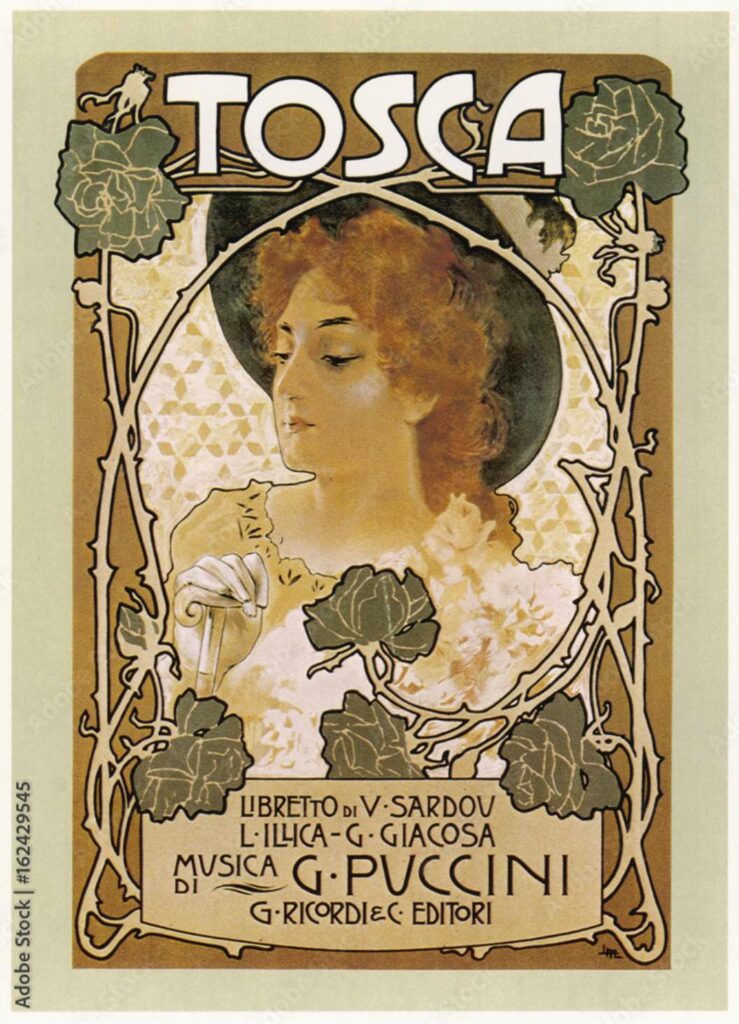
Performed for the first time on 14 January 1900 at Rome’s Teatro dell’Opera
Opera in three acts
Libretto by Giuseppe Giacosa and Luigi Illica
Set in Rome at the fall of the First Roman Republic in 1800, where supporters of Napoleon contend with the police of the Papal State.
Act I:
Rome, Tuesday, 17 June 1800. Cesare Angelotti, former consul of the Roman Republic and a political prisoner, escapes from Castel Sant’Angelo, fleeing to the church of Sant’Andrea Della Valle. Inside, he finds an old friend, the painter Mario Cavaradossi, who is working on a portrait of the Madonna which bears a striking resemblance to a devoted lady from the parish, the Marchesa Attavanti – Angelotti’s sister.
Angelotti hides when he hears Floria Tosca, Cavaradossi’s lover and a famous singer, enter. Suspicious of the voices she has heard, Tosca greets Mario frostily, and her mood worsens when she notes the resemblance between the painting and the Marchesa.
When Tosca leaves, Angelotti emerges from his hiding place and Mario offers to let him stay in his villa.
A cannon blast signals that Angelotti’s escape has been discovered. Cavaradossi and Angelotti hurry out of the church and go to Mario’s villa. When Tosca arrives to tell Cavaradossi about a performance she is giving at Palazzo Farnese, she encounters Scarpia, the Chief of Police, who plays on her fears relating to Mario’s infatuation with the Marchesa Attavanti. Tosca, consumed by jealousy, goes to Mario’s villa, certain that she will find him in the Marchesa’s arms. Scarpia orders Spoletta to follow the singer in order to capture the escaped prisoner and win over the beautiful Tosca.
Act II:
Tosca is singing at a party at Palazzo Farnese while Scarpia is dining in his apartments. Spoletta arrives, announcing that Cavaradossi has been arrested for suspicious behaviour. Scarpia calls Tosca and forces her to listen to Cavaradossi’s screams as he is interrogated. Desperate, the singer reveals where Angelotti is hiding, and Cavaradossi is released. The painter gloats and teases the Chief of Police when he hears that Napoleon has been victorious at Marengo. Scarpia unleashes all his fury and condemns him to death for this insult. In the meantime, Angelotti has killed himself to evade capture.
Scarpia offers Tosca a difficult choice: if she consents to give herself to him, she can save her lover from his fate. Tosca agrees.
The Chief of Police offers the singer a pact: they will stage a mock execution for Cavaradossi, and she and Mario will be given safe conduct to flee Rome. When Scarpia tries to get close to Tosca, she disgustedly draws a knife and stabs him to death. She takes the letter of safe conduct from his hands and, in a gesture of piety, places a crucifix on his chest.
Act III:
At dawn, Mario is writing a farewell letter to Tosca. At the same time, the singer is led to the condemned man’s cell. When they are alone, she explains that she has killed Scarpia, and that he had organised a mock execution, promising them safe conduct out of Rome. She begs Mario to play his part during the execution and pretend to have been shot when the firing squad shoot him with blanks. Tosca does not realise that this is a trick from Scarpia in order to take advantage of her. The firing squad is real.
After the execution, Mario falls to the ground. Horrified, the singer discovers that he has been killed.
Meanwhile, Spoletta finds Scarpia’s body and orders Tosca’s immediate arrest. When the men try to catch her on the bridge to arrest her, Tosca throws herself into the Tiber, invoking divine justice.
Close
1904
Madama Butterfly
Open
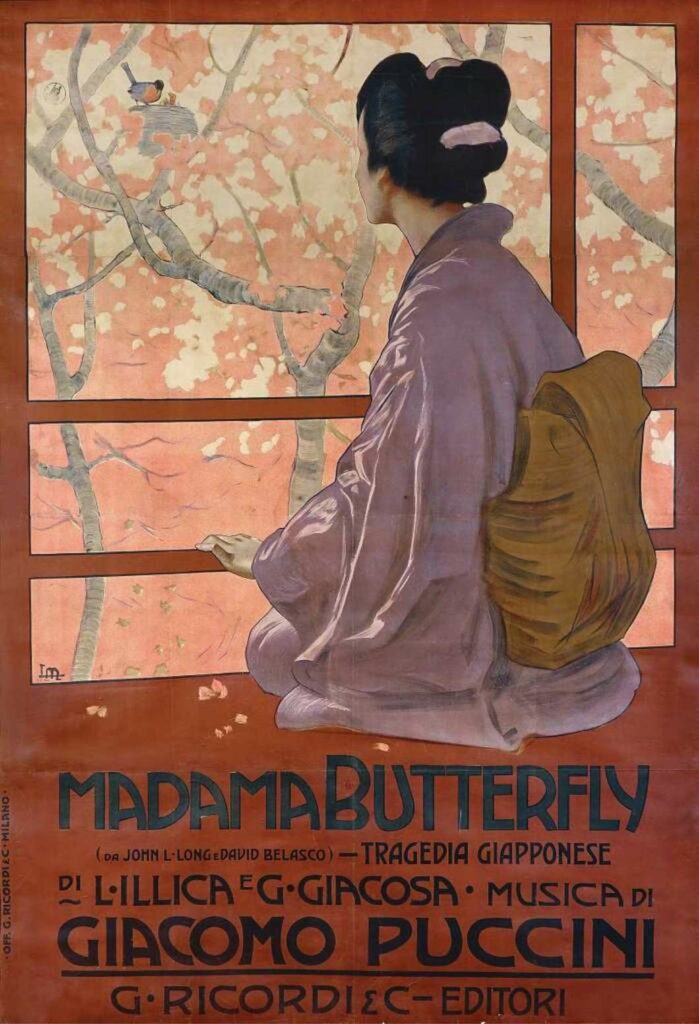
Performed for the first time on 17 February 1904 at Milan’s Teatro alla Scala
Japanese tragedy in three acts (originally two acts)
Libretto by Luigi Illica and Giuseppe Giacosa
A lieutenant in the US Navy breaks a young geisha’s heart by marrying her and then abandoning her.
Act I:
Nagasaki, start of the 1900s. Franklin Pinkerton is a lieutenant in the United States Navy who has just purchased a house in the Land of the Rising Sun. He is accompanied by Goro, a marriage broker, and is about to marry a young geisha named Cio-Cio-San in a Japanese ceremony.
The American Consul, Sharpless, meets Pinkerton to reproach him for his philosophy of enjoying life with no regard for others’ feelings, but then toasts the lieutenant’s plan to marry an American woman in the future.
During the marriage ceremony, Cio-Cio-San is presented with her family and shows Pinkerton some of her dowry. The young girl tells Pinkerton that she has converted to Christianity, but her uncle, a bonze monk, interrupts the festivities and curses Cio-Cio-San for renouncing her true faith. Pinkerton comforts her and carries her into the house.
Act II:
After their wedding, Pinkerton returned to the United States, promising his young wife that he would return in the spring – a promise he failed to keep.
Three years later, Goro and the American Consul, Sharpless, bring a letter from Pinkerton to poor Cio-Cio-San, who is still anxiously awaiting his return. The letter contains distressing news: Pinkerton has remarried an American woman named Kate and is going to return to Nagasaki with her. Cio-Cio-San refuses to accept this news and remains true to her marriage vows, showing Sharpless the son that was born from the brief relationship. Goro’s attempts to find her a new husband fail, and even when marriage with the wealthy Yamadori is suggested, the geisha refuses. Butterfly remains true to her American lieutenant.
A cannon blast signals the arrival of a ship in the port. Cio-Cio-San is thrilled: Pinkerton has finally come back for her. She asks her maid, Suzuki, to help prepare the house for her husband’s return.
Atto III:
Butterfly attende per tutta la notte l’arrivo del suo amato. Al sorgere del sole viene persuasa da Suzuki a riposare, con la promessa di essere svegliata non appena il marito arriverà. Poco dopo, Pinkerton arriva davvero, accompagnato però dalla sua nuova moglie Kate e dal console. Il tenente parla con il console e viene a scoprire che Butterfly ha messo al mondo un figlio. Decide quindi di volerlo portare con sé negli Stati Uniti. Ma dopo aver parlato anche con Suzuki, questa gli racconta come la giovane geisha lo abbia aspettato fedelmente per tre lunghi anni, Pinkerton si allontana colmo di rimorso. Butterfly si sveglia e si dispera dopo aver scoperto le vere intenzioni di Pinkerton. Viene convinta, dolorosamente, ad affidare alla coppia americana suo figlio. Con il viso rigato dalle lacrime, benda il bambino e lo fa sedere con una piccola bandiera americana in mano, prende il coltello del padre con la scritta “Con onore muore chi non può vivere con onore” e compie il rituale dello jigai. Pinkerton si decide a chiedere perdono alla geisha per il dolore che le ha causato. Si precipita nella stanza, ma quello che vede è una scena straziante. Si inginocchia e scoppia in lacrime accanto al corpo senza vita di Cio-Cio-San.
Close
1910
La Fanciulla del West (The Girl of the West)
Open
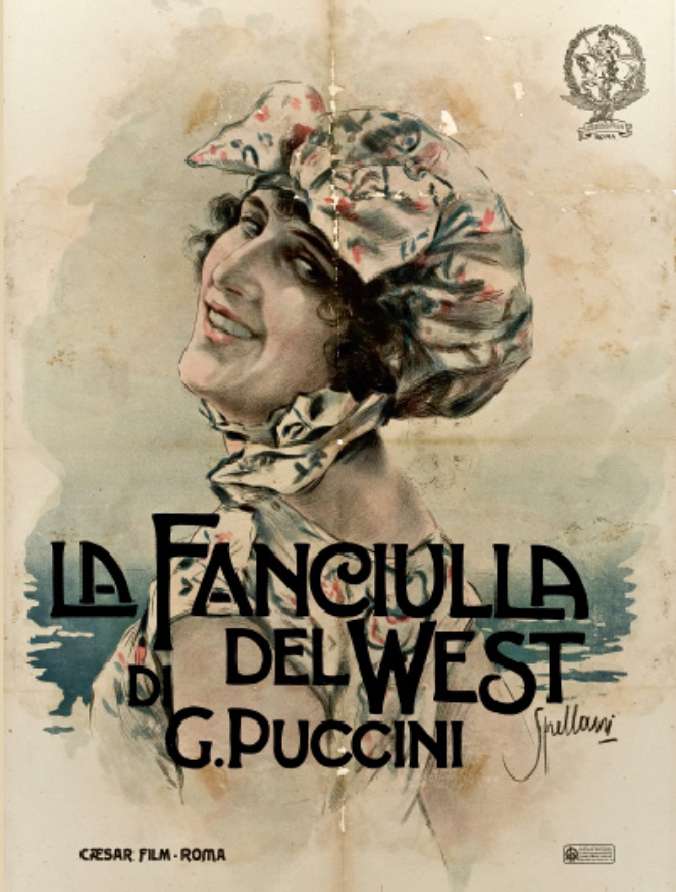
Performed for the first time on 10 December 1910 at New York’s Metropolitan Opera House
Opera in three acts
Libretto by Guelfo Civinini and Carlo Zangarini
The story unfolds in the “Polka” saloon, run by Minnie in a mining camp in California. All the men are in love with her, including Sheriff Rance and the miner Sonora, who compete for her affection.
A stranger named Dick Johnson arrives in the saloon. As an outsider, he should not be allowed in the bar.
However, Minnie greets him, claiming she already knows him: he is the man she fell in love with on the road to Monterey.
When they are alone, Dick and Minnie confess their love for each other and he is invited into Minnie’s cabin.
The night is interrupted by the arrival of Rance and some other men at the cabin who reveal the outsider’s true identity: Johnson is the bandit Ramerrez who they were all hunting for.
Minnie immediately asks Johnson to leave her home. In the doorway, he is shot. Minnie brings the bandit back into her home to help him, hiding him in her loft. However, the sheriff discovers his presence due to the blood dripping down from the loft.
Minnie challenges Rance to a poker game. The stake: Johnson’s life.
During the game, Minnie cheats to save Johnson’s life.
The miners and Rance do not accept defeat and want to capture the bandit at all costs. This time they are successful.
Minnie begs for Johnson’s freedom, reminding the men of all the good times they enjoyed together in her saloon. The miners are touched by her words and forgive Johnson, releasing him.
Close
1917
La Rondine (The Swallow)
Open
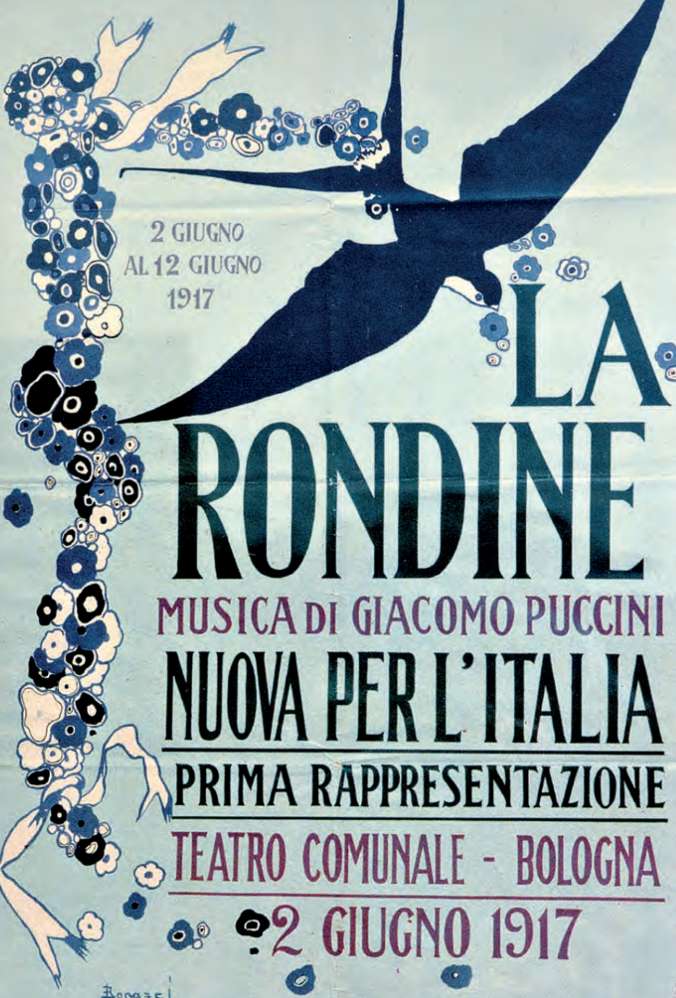
Performed for the first time on 27 March 1917 at Monte Carlo’s Grand Théâtre
Opera in three acts
Libretto by Giuseppe Adami
The opera’s protagonist is Magda, a young woman who lives in fashionable, mid-nineteenth century Paris. Despite her apparently easy and superficial life, in reality Magda is romantic and dreams of true love.
With the help of her poet friend, Prunier, Magda decides to break away from the monotony of her life: she disguises herself as a working girl and heads out to a local bar where she meets Ruggero, a young aristocrat on his first visit to Paris. The two immediately experience an all-consuming passion which sees them fleeing to the French Riviera together.
Magda is tormented with remorse for hiding her past life as a courtesan from Ruggero, and when he asks her to marry him, she realises that she can never be the wife he wants. So, after telling Ruggero the truth, Magda decides to leave him, despite the young man begging her to stay. Deeply pained, Magda leaves Ruggero and their romance for ever.
Close
1918
Il Trittico: Il Tabarro (The Triptych: The Cloak)
Open
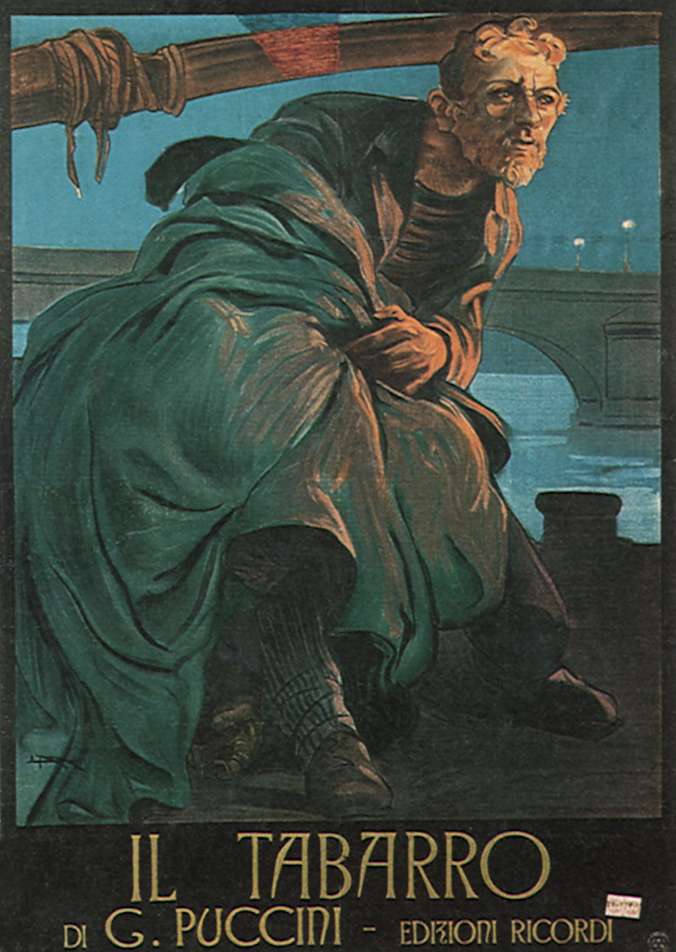
Performed for the first time on 14 December 1918 at New York’s Metropolitan Opera House
Opera in one act
Libretto by Giuseppe Adami
The story is set in 1910, on the Seine, where Michele’s barge is anchored.
His Parisian wife, Giorgetta, is significantly younger than him. Their marriage is on the rocks: Michele suspects that his wife is cheating on him with a young stevedore named Luigi. His suspicions turn out to be well-founded – Giorgetta and Luigi are meeting secretly every night.
Michele tries to reignite Giorgetta’s passion for him, reminding her of their happy past with their son, but she rejects him.
Consumed by rage, Michele discovers the identity of his wife’s lover and plots his revenge.
During the night he sets a trap for Luigi, using a light signal to call him to the barge.
The unfortunate Luigi hurries to the barge, convinced he will find Giorgetta on board. Michele strangles him and hides his body within his cloak. When Giorgetta returns to the barge, she finds Michele who opens his cloak, revealing her lover’s dead body.
Close
1918
Il Trittico: Suor Angelica (The Triptych: Sister Angelica)
Open
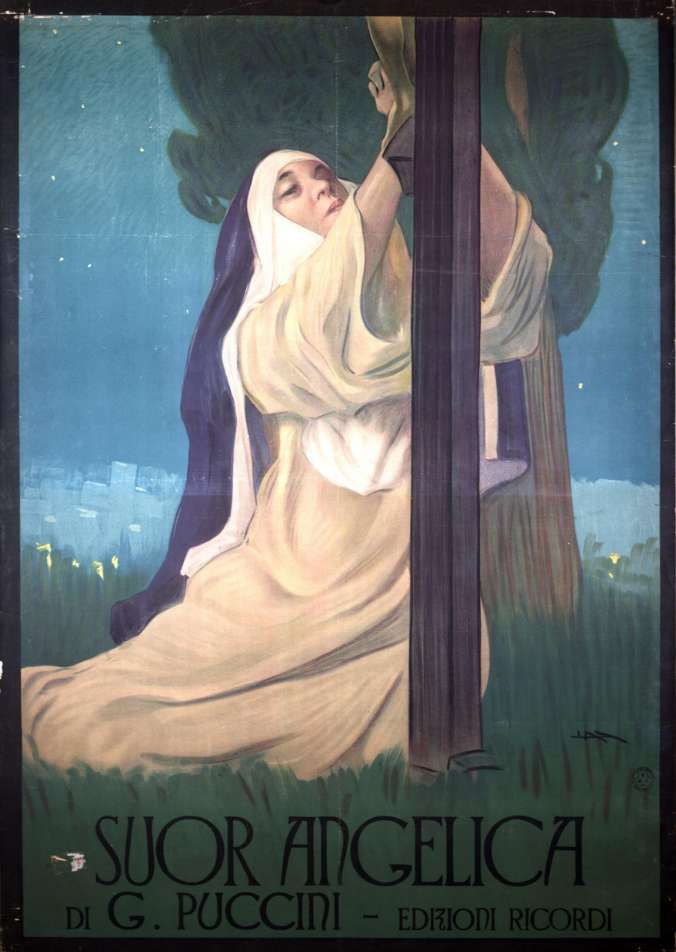
Performed for the first time on 14 December 1918 at New York’s Metropolitan Opera House
Opera in one act
Libretto by Giovacchino Forzano
Siena, end of the 17th century. This opera tells the story of Sister Angelica, a woman from a noble family who, as punishment for her forbidden love, was sent to live in a convent to repent for her sins. During her seven years in the convent, she has been kept away from her newborn baby, the illegitimate result of her love affair.
When her aunt, the Princess, visits her, Angelica hopes to receive the forgiveness she desires, but instead she is asked to renounce her claim to her inheritance to fund her younger sister’s dowry. Sister Angelica, however, is determined to hear about her son, and receives the painful news that he died two years previously.
Devastated, she decides to join her son in Heaven by drinking deadly poison. But, before she dies, she prays to the Virgin for mercy. The Madonna appears and places her beloved son in her arms, leading her away to eternal peace.
Close
1918
The Triptych: Gianni Schicchi
Open
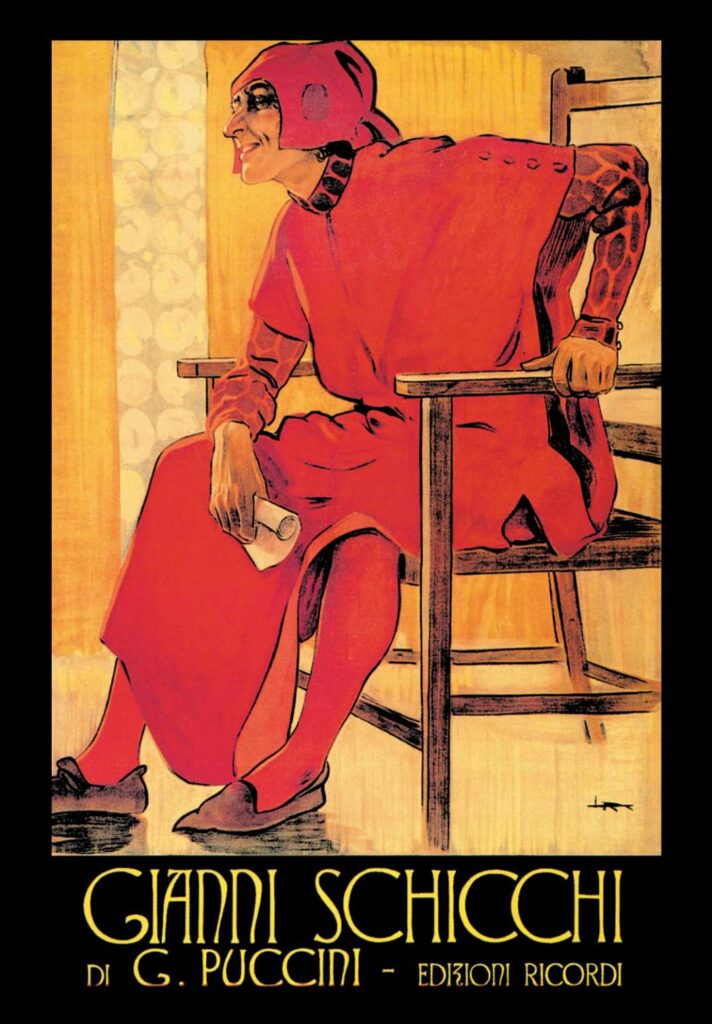
Performed for the first time on 14 December 1918 at New York’s Metropolitan Opera House
Opera in one act
Libretto by Giovacchino Forzano
Florence, 1299. Buoso Donati has died, and his family are gathered in prayer around his deathbed. But when they discover that all of his wealth has been left to a monastery, Rinuccio and his fiancée Lauretta turn to Gianni Schicchi, her father, for help with the will. When Gianni arrives at Donati’s house, he is treated poorly because of his humble origins, but he agrees to remain when asked to by Lauretta.
As the notary has not yet been informed of Buoso’s death, Gianni hides under the dead man’s bed, disguising his voice as he dictates the details of his new will. While he does this, the pretend Buoso states that he wishes to leave his most treasured possessions to “Gianni Schicchi”, his dearest friend, and drives the Donati family out of the house, which now belongs to him. Lauretta is now no longer from a poor family, and Gianni gazes at the happy lovers, attempting to justify his greed as generosity for the young couple.
Close
1926
Turandot
Open
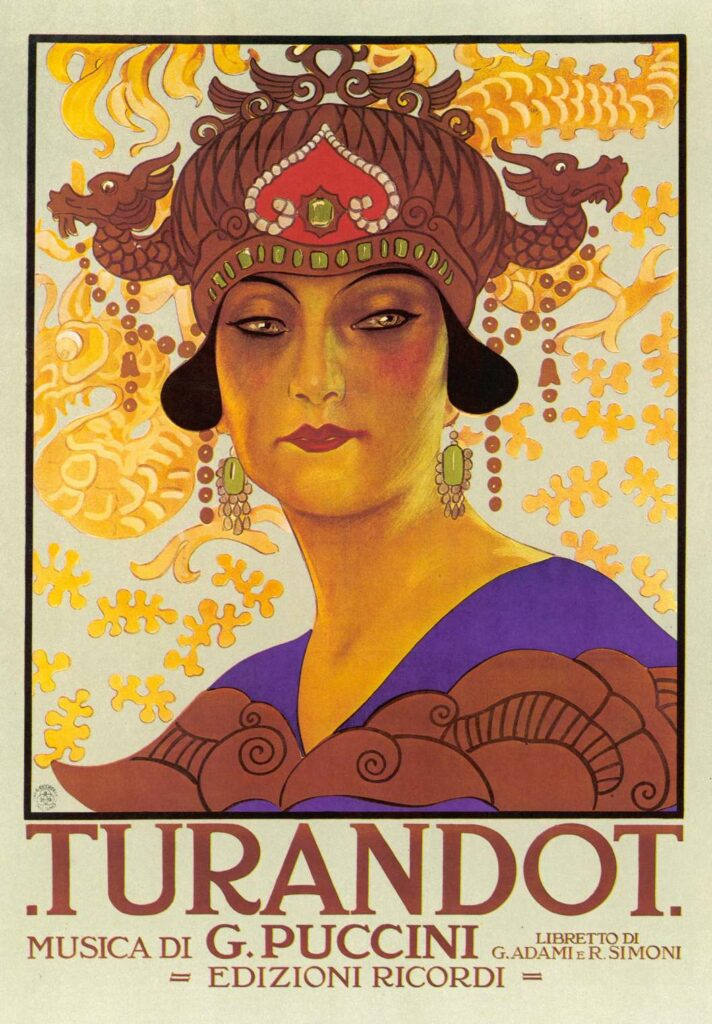
Performed for the first time on 25 April 1926 at Milan’s Teatro alla Scala
Opera in three acts and five scenes
Composers Giacomo Puccini and Franco Alfano
Libretto by Giuseppe Adami and Renato Simoni
The merciless Princess Turandot falls in love with a young unknown prince.
Act I:
An edict is announced by a Mandarin: Turandot, the Emperor’s daughter, will only marry a suitor who is able to solve three difficult riddles that she has devised.
The Prince of Persia has failed the test and will be executed when the moon rises. In the meantime, in the midst of the milling crowd, waiting for the execution, young Calaf encounters his long-lost father, Timur, the deposed king of Tartary alongside his devoted slave girl Liù, who is madly in love with the old man’s son.
While the crowd calls for mercy for the Persian prince, Turandot orders the executioner to proceed. In this moment, Calaf is struck by the Princess’s regal beauty and, seized by an amorous impulse, decides to risk his luck at solving the three riddles.
Despite the efforts of the three royal ministers, Ping, Pong and Pang, to stop him, Calaf strikes the gong, calling out Turandot’s name and accepting the challenge.
Act II:
Night has fallen. The three royal ministers, Ping, Pong and Pang, lament the repeated executions of Turandot’s victims. In the palace courtyard, everything is ready for the challenge of the riddles. In attendance: the Emperor, the people, royal advisers, Liù, Timur, the mysterious prince Calaf and Turandot. The Emperor tries to convince Calaf to change his mind, but he refuses and begins the challenge. Turandot explains the reasons for her behaviour: in the past, the kingdom had been conquered by Tartary, and her ancestor was raped and murdered by one of them. Calaf manages to solve all of the riddles and the princess despairs.
The Emperor must keep his word and gives Turandot to the unknown prince. However, Calaf presents a new challenge to Turandot: if she is able to discover his name by dawn, he will give her his life. Turandot accepts and the Imperial anthem is played solemnly.
Act III:
Heralds call out the princess’s command that no one may sleep until the name of the unknown prince has been discovered. Calaf is also awake, dreaming of his victory and winning over icy Turandot. Liù and Timur are called before Turandot to reveal the prince’s name. To protect elderly Timur, Liù declares that she is the only one who knows the prince’s true identity but will not reveal it. The young slave girl is tortured, but remains silent – her love gives her the strength to resist. Unable to conceal the name any longer, Liù seizes a dagger from a guard and kills herself. Her lifeless body is carried away by a funeral procession.
When Turandot and Calaf are alone, he kisses her. Turandot admits she is attracted to the prince, even though she was initially scared of him. As she is very proud, she begs him to not humiliate her. Calaf then reveals that his name is: “Calaf, son of Timur”, placing his life in her hands. The next day, in front of the royal palace, Turandot makes a public declaration that the prince’s true name is “Love”. The princess, now in love, falls into Calaf’s arms and the crowd rejoices.
Close